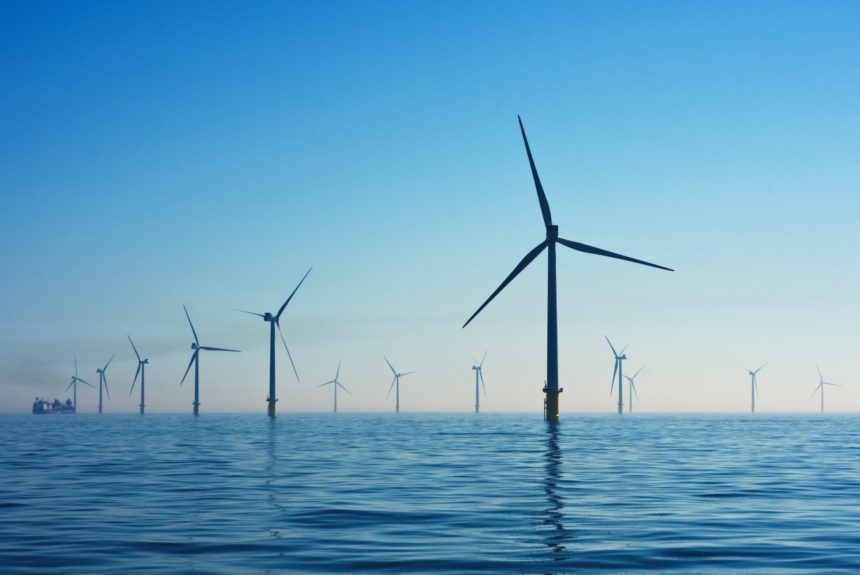By Kelvey Vander Hart
Most of us associate wind turbines with rolling hills and open spaces. But thanks to increasing development of offshore wind projects, these turbines can now be associated with rolling waves and open ocean. Here are five facts you didn’t know about offshore wind:
Offshore Wind Turbines Are Much Taller Than You Think
A wind turbine that’s built on land is usually around 280 feet tall with a rotor diameter somewhere between 130 and 290 feet. But in order to fully capture the wind available in the open ocean, offshore wind turbines have been scaled up in size. The U.S. Wind Energy Technologies Office noted that offshore wind turbines can often be as tall as one-and-a-half Washington Monuments, or about 830 feet tall.
As another example, Siemens Gamesa introduced a new model earlier this year that is the world’s largest wind turbine. This model has a 728 foot rotor diameter, which is around the same height as the Golden Gate Bridge. So, if you’re impressed by the size of the land-based turbines you drive by, stay that way, but know that there are turbines out there that are much larger.
Generated Electricity Transmitted By Undersea Cables
Most of us are accustomed to the equipment that makes up land-based energy transmission, such as overhead wires and power plants, but offshore transmission is a foreign idea. The imagination is not helped by viewing images of offshore wind turbines that have no visible transmission implements. But there is a good reason for this – the transmission takes place underwater. The U.S. Wind Energy Technologies Office perfectly summarizes this process:
“Electricity produced by offshore wind turbines travels back to land through a series of cable systems that are buried in the sea floor. This electricity is channeled through coastal load centers that prioritize where the electricity should go and distributes it into the electrical grid to power our homes, schools, and businesses.”
Offshore Wind Turbines Are Usually Found In Deep Waters
You will not find offshore wind turbines right off the coast. Instead, most are found in deep waters, areas that are so deep that traditional ocean foundations are not usually a good fit. These turbines are anchored to the seabed in a few different ways, like through tension leg platforms or buoys.
The Siting and Permitting Process Is Very Complex
There are already many hoops to jump through when developing a wind project on land – open ocean development adds a few layers. There is, of course, the state government to consider, as state jurisdiction extends three miles from the coast. But permits and approval from other regulatory bodies are required. This could include the Department of Energy, the Department of the Interior, the Coast Guard, the National Oceanic and Atmospheric Administration (NOAA), and any other government agency or organization that may be impacted by the presence of a wind turbine.
Offshore Wind Is Picking Up Steam in the United States
The Block Island Wind Farm, which was the nation’s first commercial offshore wind project, came online in December of 2016 off the coast of Rhode Island. Offshore wind has continued to grow since that point, with project developers estimating at least 14 offshore wind projects and a total capacity of 9,112 megawatts to come online by 2026. Findings from the Department of Energy show that the United States could develop 86 gigawatts of offshore wind capacity by 2050.
Land-based wind turbines have already had a massive impact in shifting the United States toward increased reliance on renewable energy. Offshore turbines will take wind energy to even greater heights.
Kelvey Vander Hart is a native Iowan, a member of the American Conservation Coalition, and a communications specialist at Reason Foundation.
The views and opinions expressed are those of the author’s and do not necessarily reflect the official policy or position of C3.
